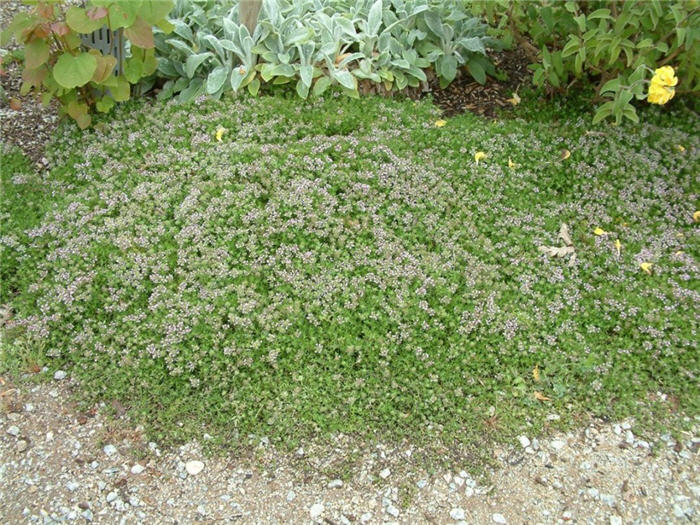| Botanical Name: Thymus praecox ssp. arcticus | |
| Common Name: Creeping Thyme |

-
Anatomy
-
Culture
-
Design
Plant Type
Ground cover, Perennial
Height Range
Under 1'
Flower Color
Pink, Purple
Flower Season
Spring, Summer
Leaf Color
Dark Green
Bark Color
n/a
Fruit Color
n/a
Fruit Season
n/a
Sun
Full
Water
Very Low
Growth Rate
Fast, Moderate
Soil Type
Clay, Loam, Rocky, Unparticular
Soil Condition
Average, Poor, Well-drained, Dry
Soil pH
Neutral
Adverse Factors
Attracts Bees
Design Styles
English Cottage, Formal, Japanese, Meadow, Mediterranean, Ranch, Seascape, Spanish, Native Garden
Accenting Features
Fragrance
Seasonal Interest
Summer
Location Uses
Entry, Perennial Border, Parking Strip, Patio, Walls / Fences, Walkways, With Rocks
Special Uses
Cascade, Container, Filler, Mass Planting, Lawn Alternative, Small Spaces
Attracts Wildlife
Butterflies
Information by: Stephanie Duer
Photographer: Linda Engstrom
Photographer: Linda Engstrom
-
Description
-
Notes
This thyme forms a low, dense mat of aromatic, tiny green leaves. Light pink flowers in early summer cover the mat. Very tough and vigorous, it has few needs except for full sun, good drainage, and periodic watering. Attracts bees and butterflies, but is uninteresting to deer and rabbit. Tolerates moderate foot traffic and would be an ideal lawn substitute for a low-use lawn area, or between steps along a walkway.
Grow in full sun and well drained soil. Though vigorous, it will not overtake taller perennials and so is well suited for borders. Excellent in sunny parkstrips or as an alternative to lawn, provided its not one that gets played on. Mix a variety of thymes and veronicas for an interesting groundcover quilt. Does not require deadheading or fertilizing, though it can be mowed in early spring, if necessary, to make it tidy.